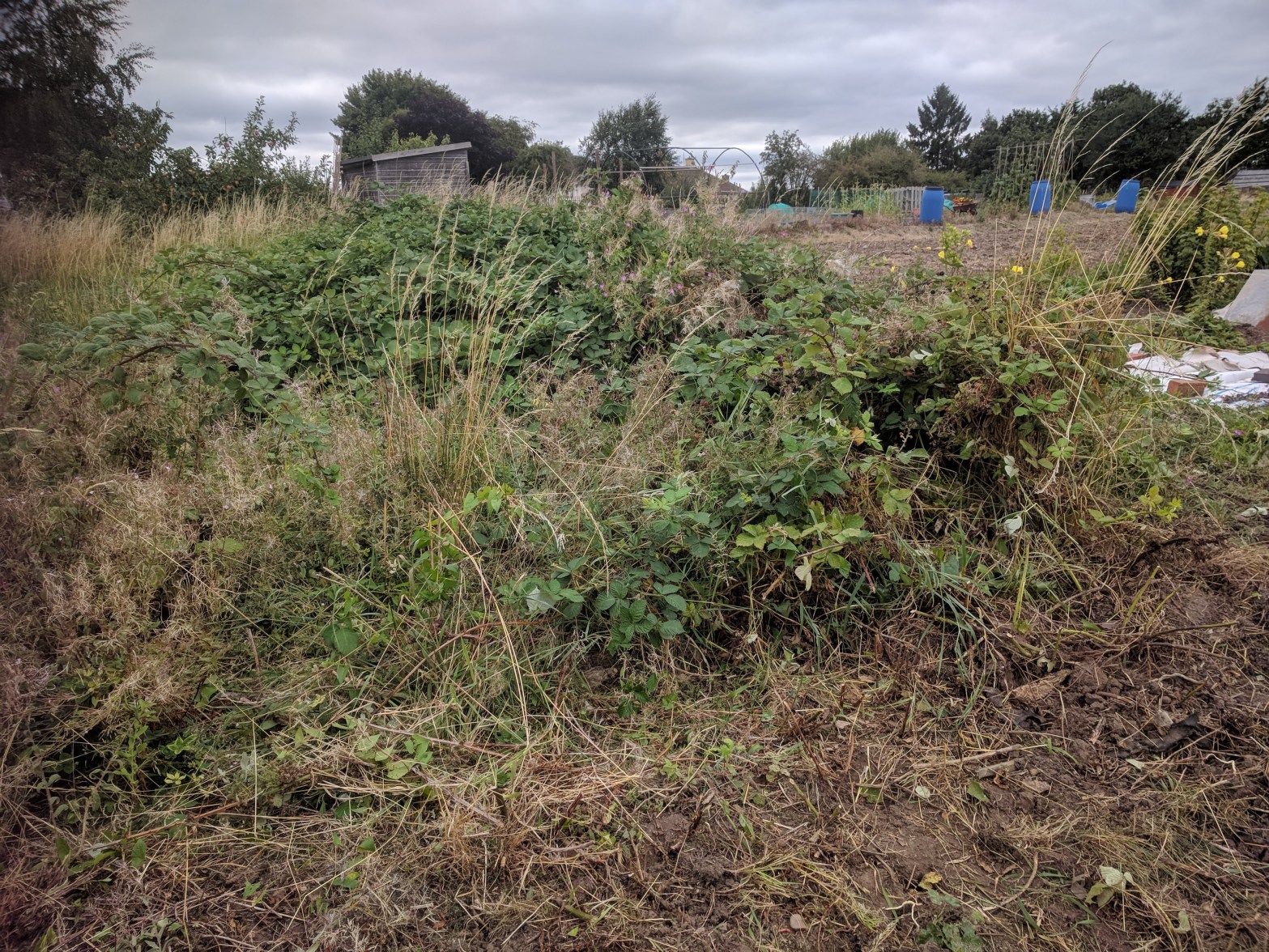I’m inherently quite lazy so much as I am enjoying gardening I want to be able to work towards making my allotment plot as self- as possible. And I, hopefully not too naively, think that my approach can fit with ways of growing that make best use of natural resources, are organic and work with, rather than against nature. So yes I believe that no-dig gardening methods as espoused by Charles Dowding will be just as productive, if not more so, than traditional methods of digging and double-digging. And at the same time I don’t have to exert myself too much other than mulching and compost-making. It will also be kinder to my back.
By the same token, it seems to make sense to grow a wide range of perennials, or self-seeding annuals, and reduce the amount of time (& space) on sowing, pricking out, growing on and planting out. There are rules on my allotment about the number of trees etc that can be planted so whilst I don’t think I’d get away with turning my whole plot over to forest gardening I am planning on using some permaculture ideas on at least a small corner of my plot – once I’ve tackled the brambles which are currently encroaching from the vacant pot next door. More of a shrubbery or hedgerow garden than a fullscale forest garden but we all have to start somewhere! So I’m currently keeping my eye out for bargain perennials and working on my design which I hope to be able to implement over the next year or so – as finances and time allow.
Traditionally a food forest has seven layers starting at the top with the canopy layer of large fruit and nut trees down through a low tree level, shrub level, herbaceous layer, ground cover, rhizosome/root layer and vertical climbers or vines. I think I’ll have to dispense with large trees but am planning on trying for 6 layers. So something along these lines at the moment forming both an edible hedgerow along two sides plus filling in an area close to my shed and surrounding a planned wildlife pond (which may also contain some edibles).
- Low tree layer – dwarf or cordon apple & plum trees, szechuan pepper
- Shrub layer – Black and red currants, gooseberries, chokeberries (aronia), sea buckthorn (nitrogen fixing)
- Herbaceous layer – liquorice, perennial kale, rhubarb, Egyptian walking onions, comfrey, borage, sorrels, herbs eg feverfew, lemon balm, asparagus?
- Ground cover – strawberries, ramsons
- Root layer – Skirrett? Groundnuts? Jerusalem artichoke?
- Vines – hops
So how far have I got? A rough plan I’m playing with on my garden planner, a couple of plants in pots, a few plants on my plot which may need to be relocated, some sown seeds and others waiting for sowing/planting in spring – and a growing wishlist!







Sounds like you’ve got good plans for your allotment.
I’ve not tried skirret (to grow or eat) but there are Jerusalem artichokes in the garden at the moment. They are going in a pot next year, though, as they are starting to take over – and I want the space for a hazel tree.
I’d recommend you lookup skyeent on WordPress. She must has substantial knowledge of horticulture/plant biology etc.
LikeLike
Thanks Helen. I last grew Jerusalem artichokes about 30 years ago – when I last had an allotment! I do recall they had a tendency to take over – and produced a much bigger harvest than we could possibly eat. They’re ok to eat on an occasional basis but don’t think I’d want to have them every day! So containerising them may be a sensible option.
Thanks for the suggestion of SkyeEnt – I’ve looked her up and started following her blog.
LikeLike
Yes, it wouldn’t be so bad if the Jerusalem artichokes were a delicacy. I’ve still got most of last year’s crop in the freezer – can only really eat them in stir-fries, so it’s taking a long time to get through them!
Anyway, enjoy your renewed blogging experience, Liz.
LikeLiked by 1 person